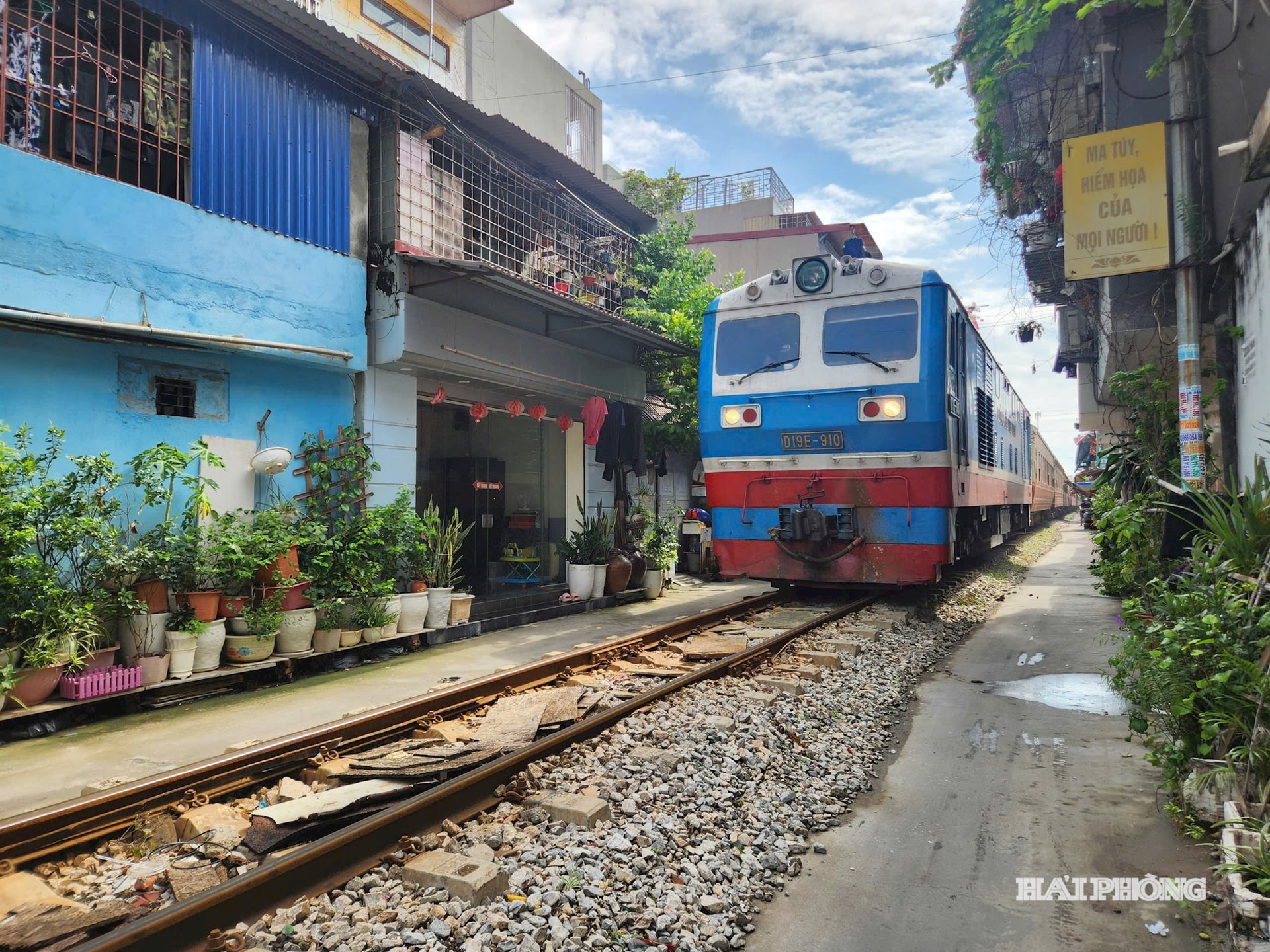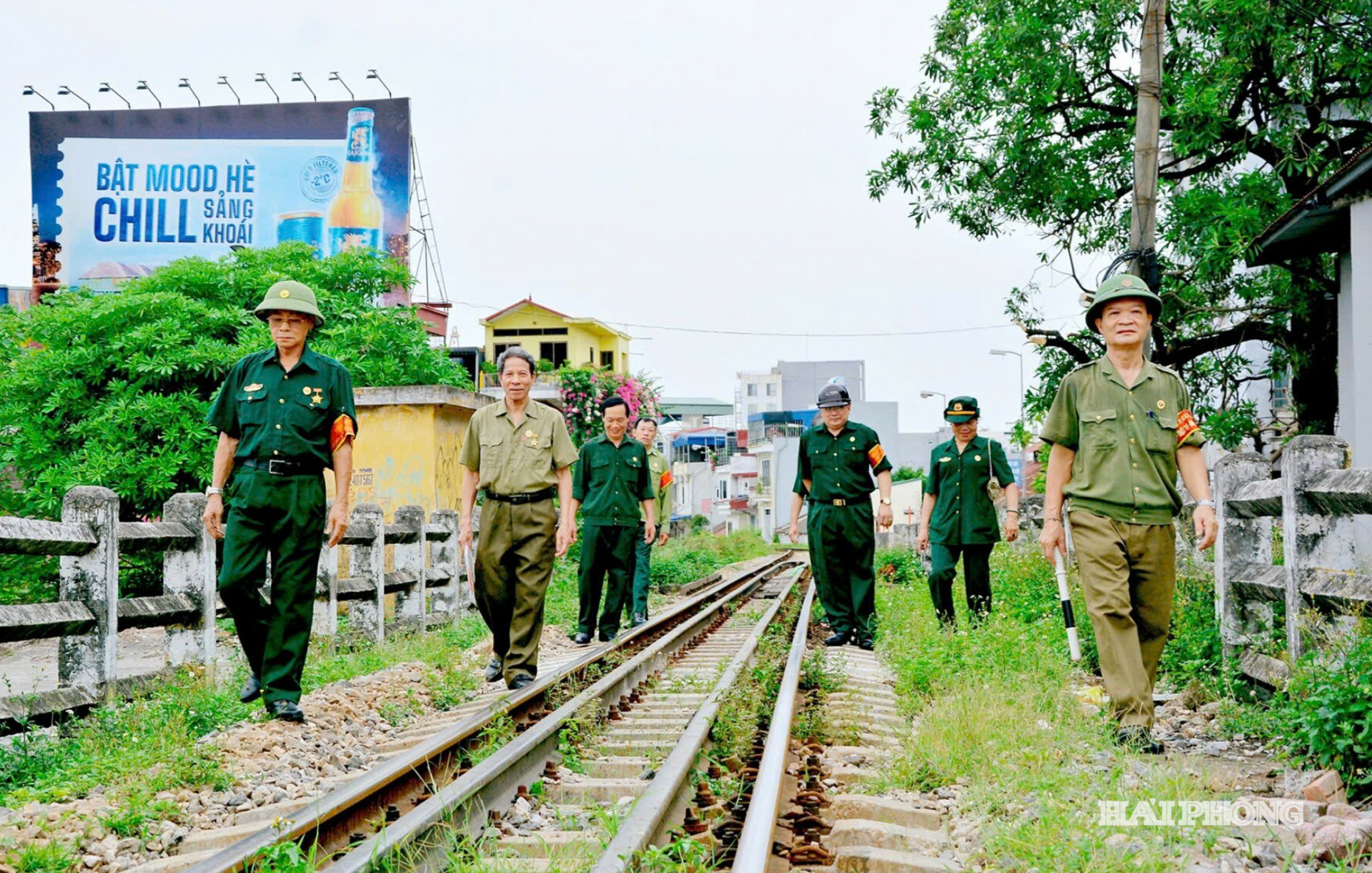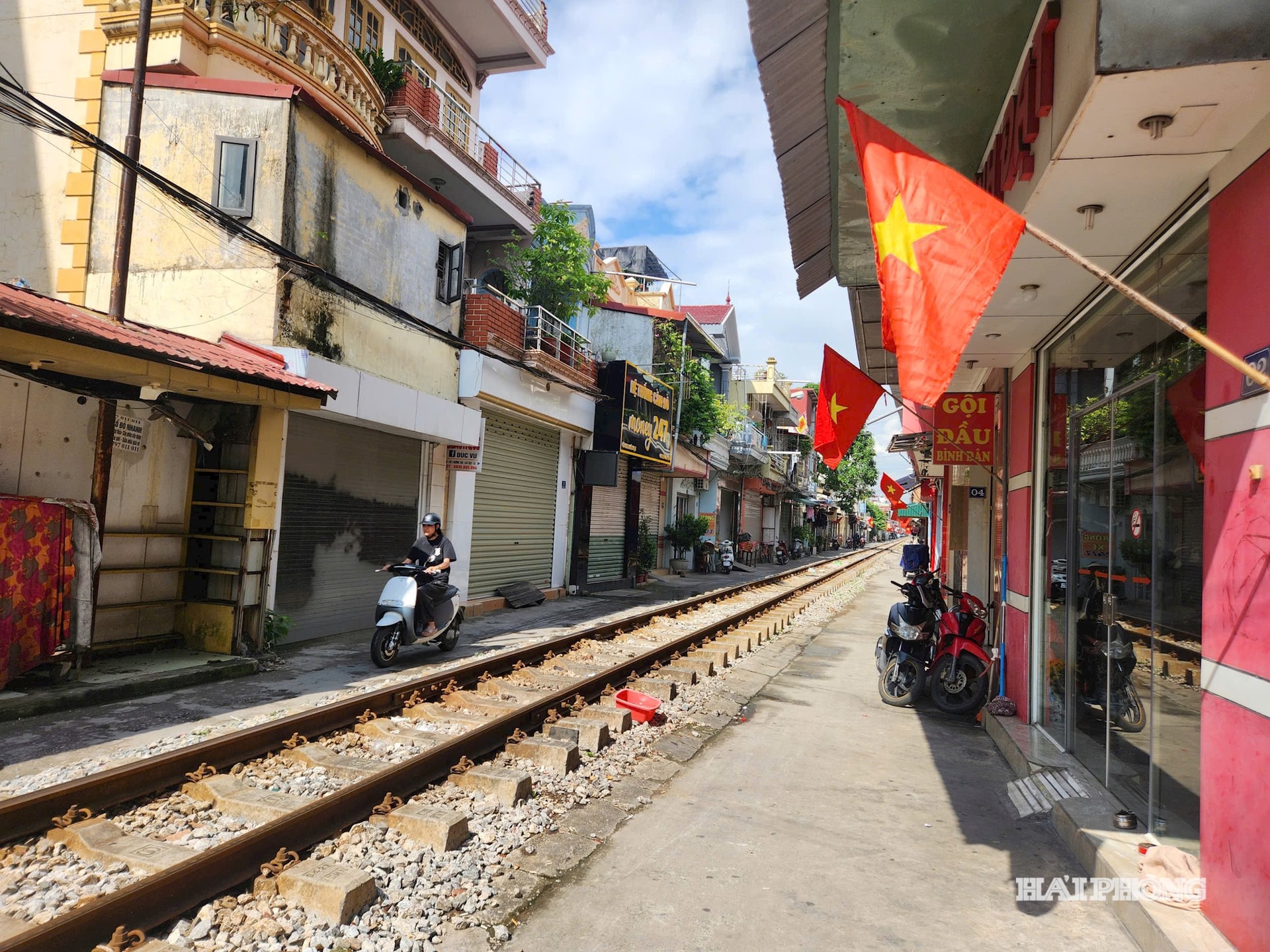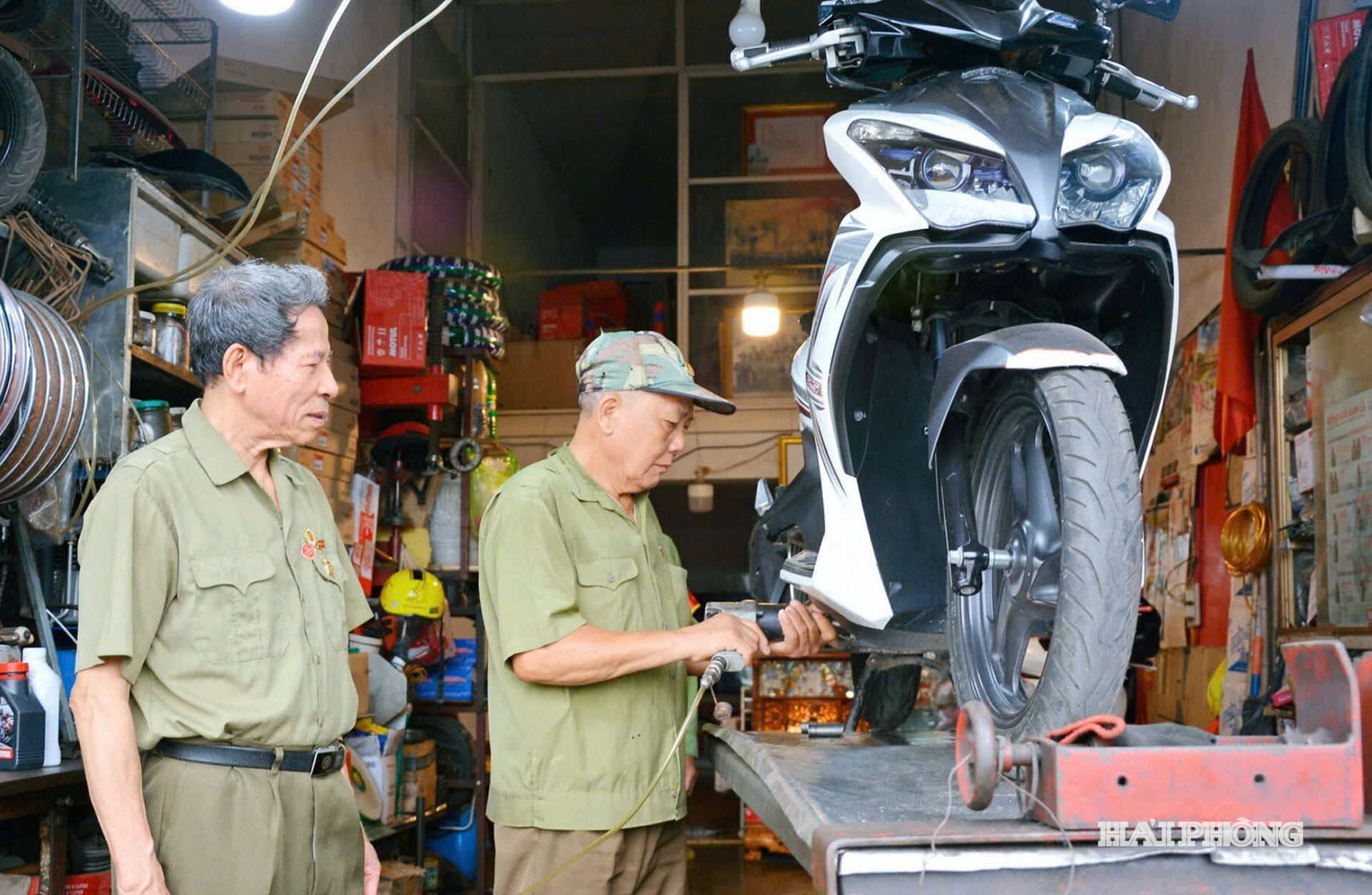
Memories I don't want to recall
In the memory of Mrs. Tran Thi Ha, over 80 years old, living on Cat Cut street, the past years in the railway area were a haunting time. She said that back then, this area was still deserted and shabby, not as spacious and clean as it is now. Many drug addicts from all over gathered to inject drugs, making this place always a hot spot for drug abuse.
“Every house near the railway tracks kept its doors closed day and night. Just opening the door, you could see drug addicts wandering around, syringes and needles strewn across the street. Children did not dare go out, and adults were always afraid. I do not want to remember those days, because they were the sadness of the street where we were born and have been attached to for generations,” Ms. Ha recalled.
"Train Street" is the familiar name for the residential area along both sides of the railway, stretching from Tam Bac Bridge to Hai Phong Station, about 2 km, with more than 1,000 households living there. At one time, this "street" was a source of anxiety for the people, a concern for the local Party Committee and government when every day hundreds of addicts came to buy, sell and use drugs.
“Back then, anyone who had relatives living on the railway street had worries in their hearts. Worrying about their lives, worrying about their children, worrying about their own future,” said Nguyen Van Phuc, a resident of Cat Dai Street, near the railway area.
Faced with such a serious drug problem, Le Chan district (now Le Chan and An Bien wards) resolutely implemented the model of “Linking crime prevention, drug abuse, and environmental sanitation improvement in railway areas”. This is a major policy, mobilizing the synchronous participation of the government, police, mass organizations and each citizen.

Mr. Bui Duc Hai, former Chairman of the Veterans Association of Cat Dai Ward (now Le Chan Ward), who made many positive contributions to the movement to fight against drugs, recalled: “The veteran force at that time was the core, coordinating with the police to patrol, control, and be on duty day and night. The security camera system was installed in all alleys along the railway, directly connected to the ward police. Thanks to that, drug-related crimes were quickly eradicated, no longer occurring openly as before.”
Local government officials, residential groups, and mass organizations go to each family to persuade and persuade them not to assist or cover up for drug crimes, and not to let their children get involved in social evils. Local authorities and mass organizations choose to talk to the most prestigious person in the family, patiently explaining that "slow and steady wins the race" to influence family members. "From one family, change spreads to other families. We find ways to help addicts after rehabilitation learn a trade, and link them to find jobs at many businesses. Only that way can help many people not relapse and integrate into the community," Mr. Hai affirmed.

New peaceful street
With the drug problem gone, the appearance of the "train street" has changed day by day. The makeshift shelters and overgrown weeds have disappeared, giving way to rows of fresh flowers and well-painted houses. Grocery stores, auto repair shops, electronic stores, and small shops serving daily life have appeared more and more, proving the new vitality of this place.
During a warm family meal with her children and grandchildren on National Day, Mrs. Pham Thi Diu, who has been living on the "train street" for 30 years, happily said: "Now we have to call this the new train street, because it has been a long time since there has been any sign of drug abuse. Our children now all have jobs and people's incomes have also improved." For her and many households along the railway, the family meals are truly complete, without the worries of drugs surrounding them like before.

The model of "Linking crime prevention, drug abuse, and environmental sanitation improvement on Cat Cut and Quay railway lines" is a typical "Smart People's Mobilization" model in the movement to build civilized and safe streets in Hai Phong city. Many related organizations and individuals have been commended by the Central and the city for their outstanding achievements in implementation. The economic life of the people of the "train street" is increasingly prosperous. Drugs have receded, and peace has returned.
The story of the "train street" is not only the change of a residential area but also a profound lesson that when the government and the people are determined and in agreement, drugs, no matter how rampant they are, will no longer have a place to survive. From the effectiveness of the model of linking crime prevention and drug abuse prevention on the railway, Hai Phong continues to replicate it, with greater consensus and determination to build a "drug-free city".
Strong measures by the police force, along with the persistent and close advocacy of veterans, women, and youth unions, have become the key to opening up changes in the "train street". Not only stopping at eliminating drugs, but also improving the landscape, cleaning the environment, encouraging people to plant flowers, and keeping the alleys clean and beautiful.
Source: https://baohaiphong.vn/pho-duong-tau-nay-da-khac-xua-519784.html





















































![[VIDEO] Propaganda and promotion of the use of E10 RON95 gasoline products in Quang Ngai | QNgTV](https://vphoto.vietnam.vn/thumb/402x226/vietnam/resource/IMAGE/2025/9/4/eeb7f42edd2745a482b4e5fd2f10e9b2)






![[VIDEO] Petrovietnam – 50 Years of Keeping the Heritage Torch, Building National Energy](https://vphoto.vietnam.vn/thumb/402x226/vietnam/resource/IMAGE/2025/9/3/3f5df73a4d394f2484f016fda7725e10)
































Comment (0)